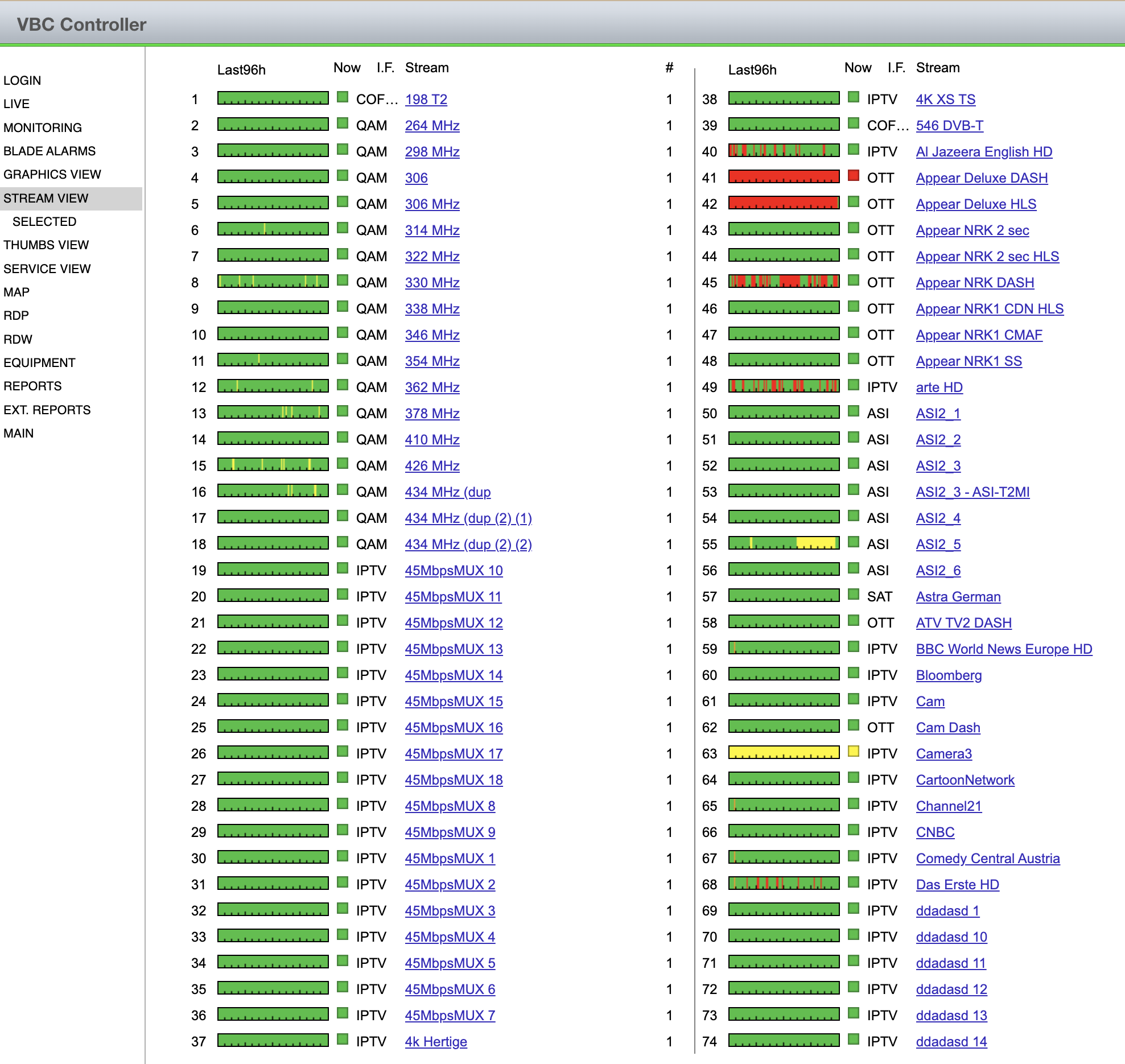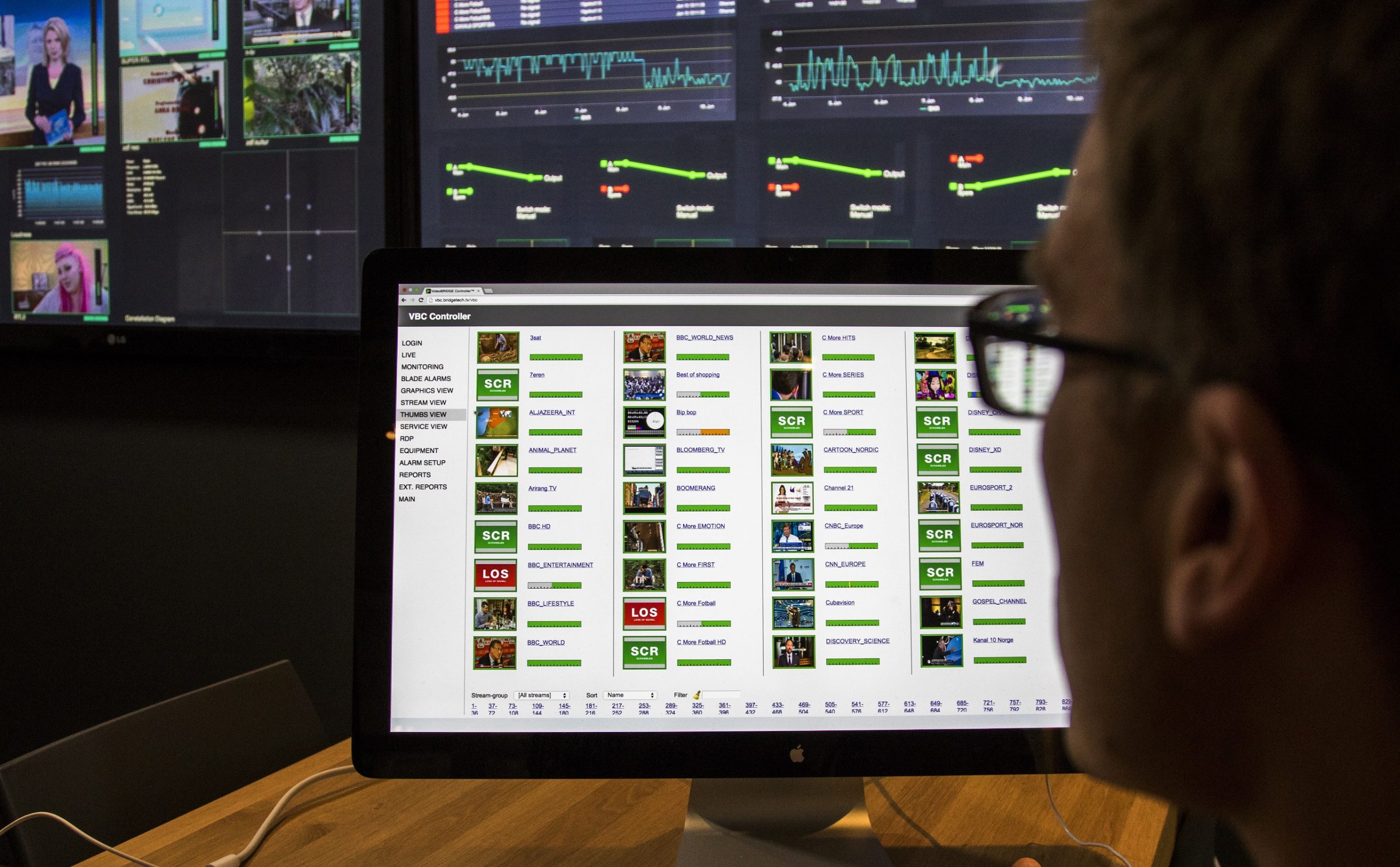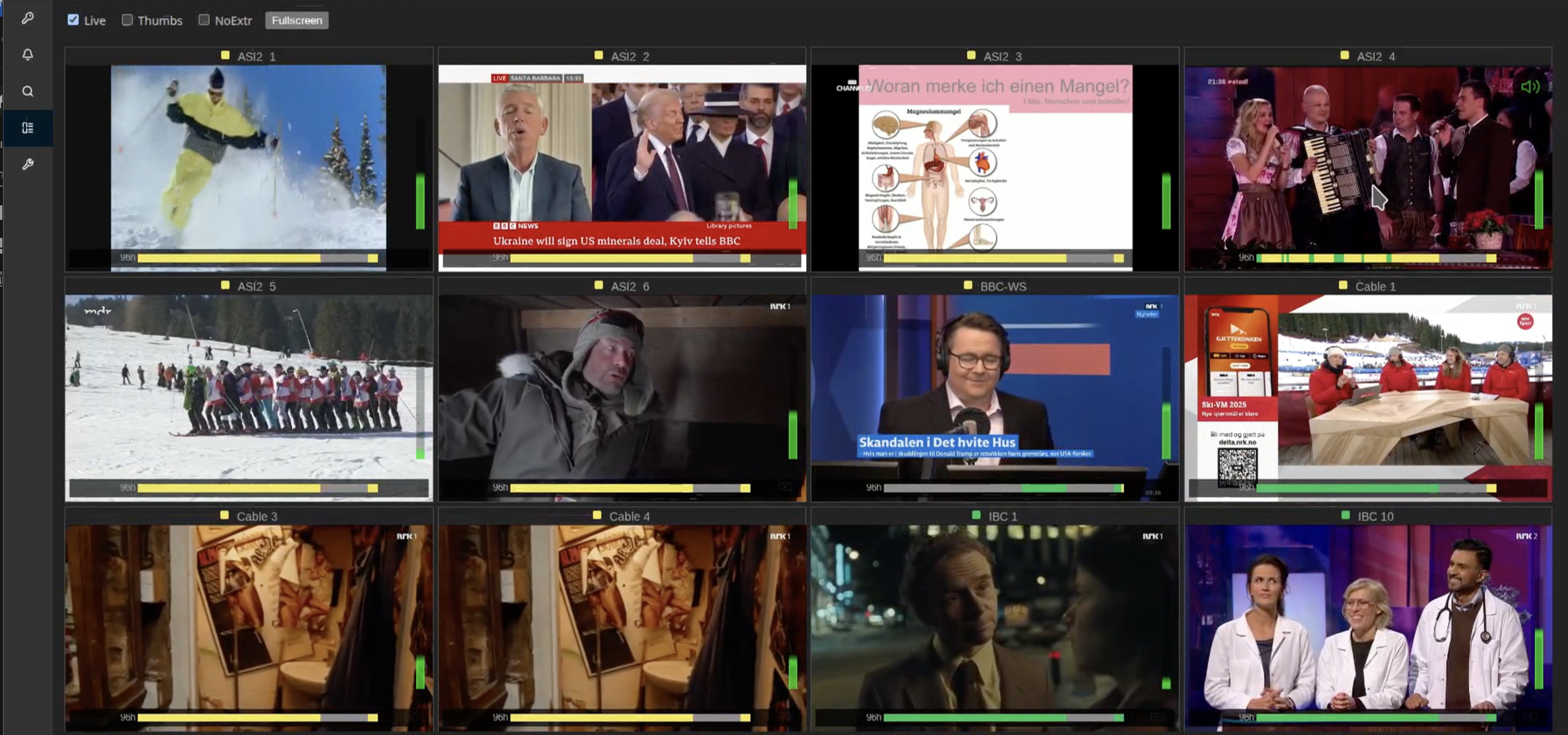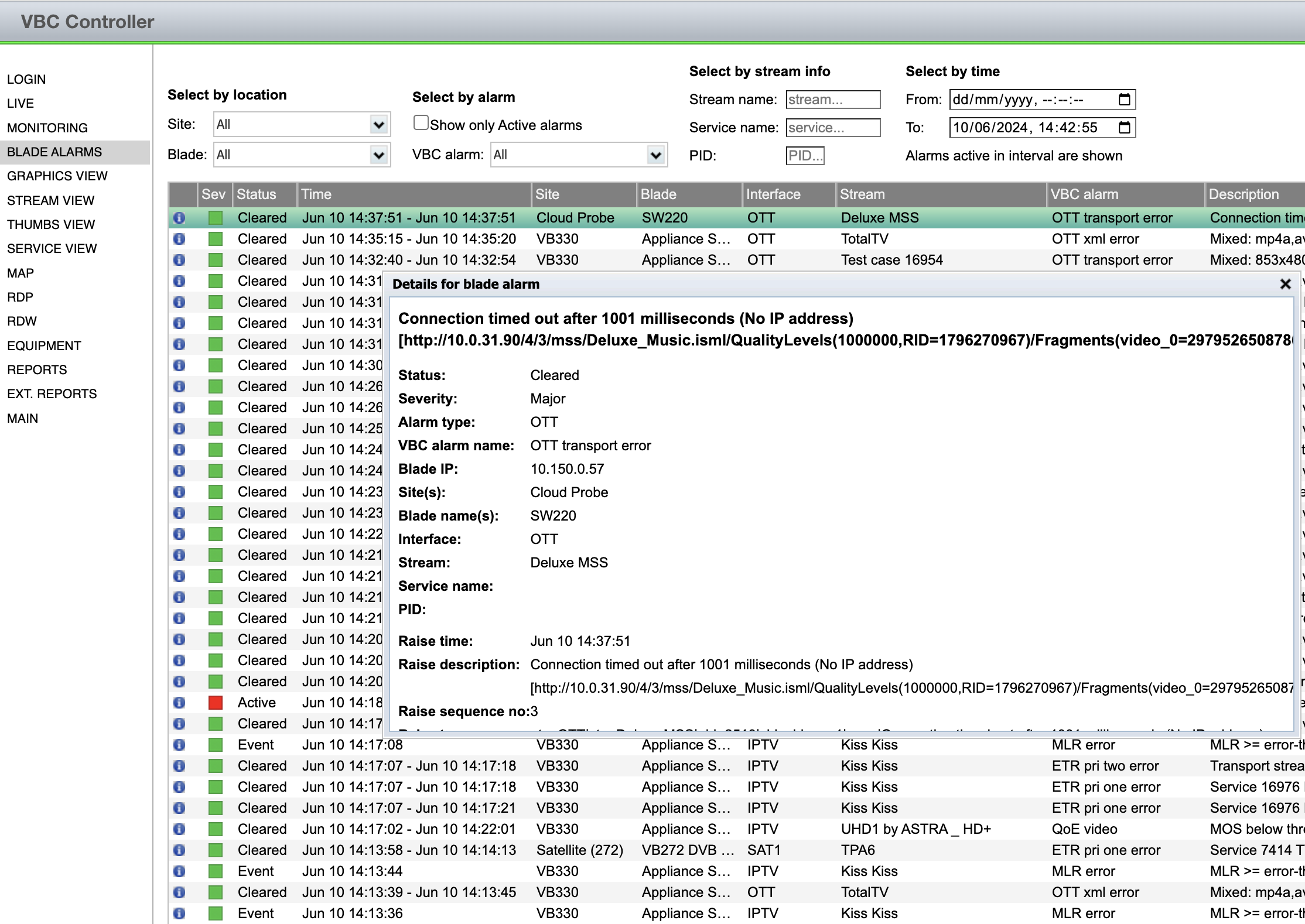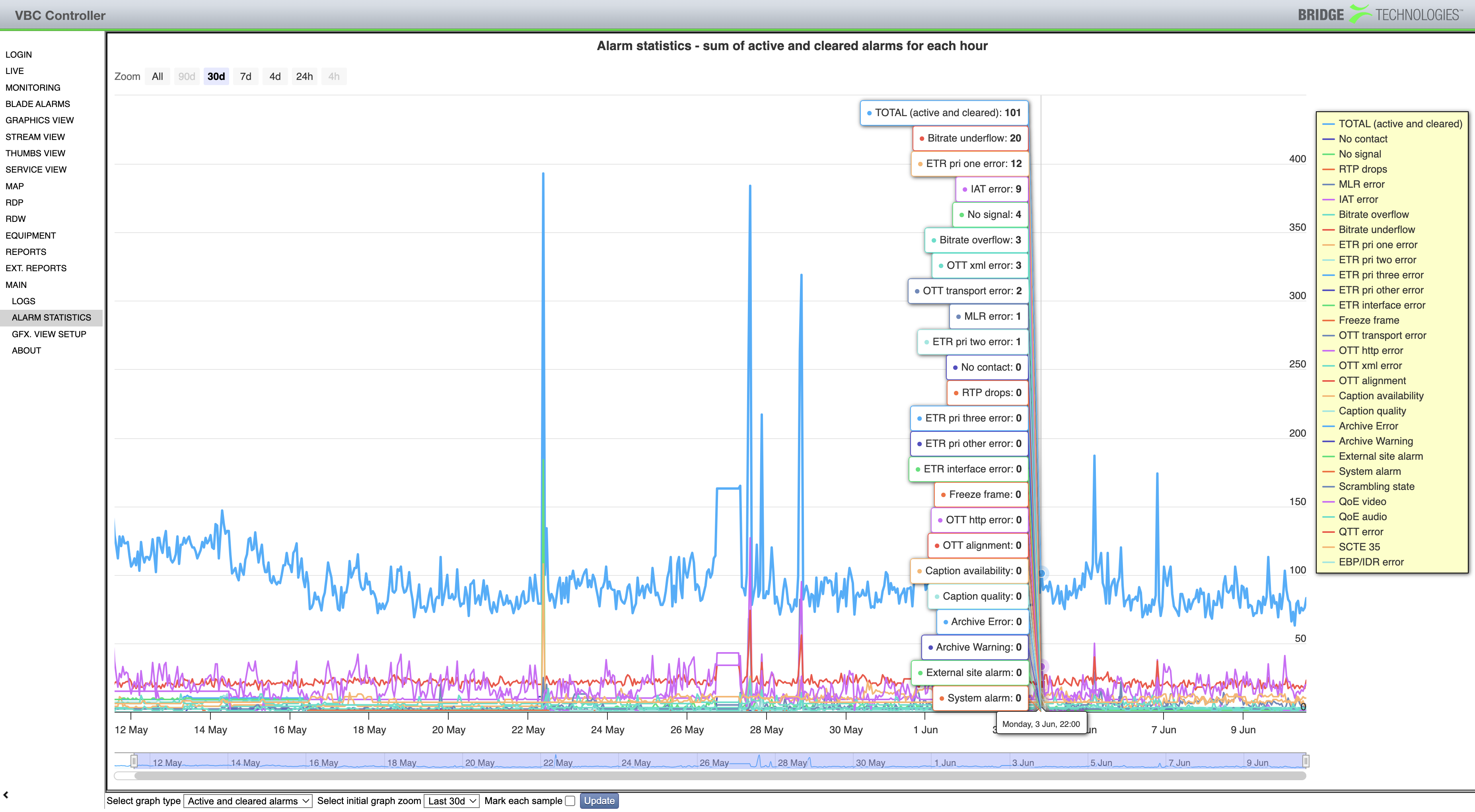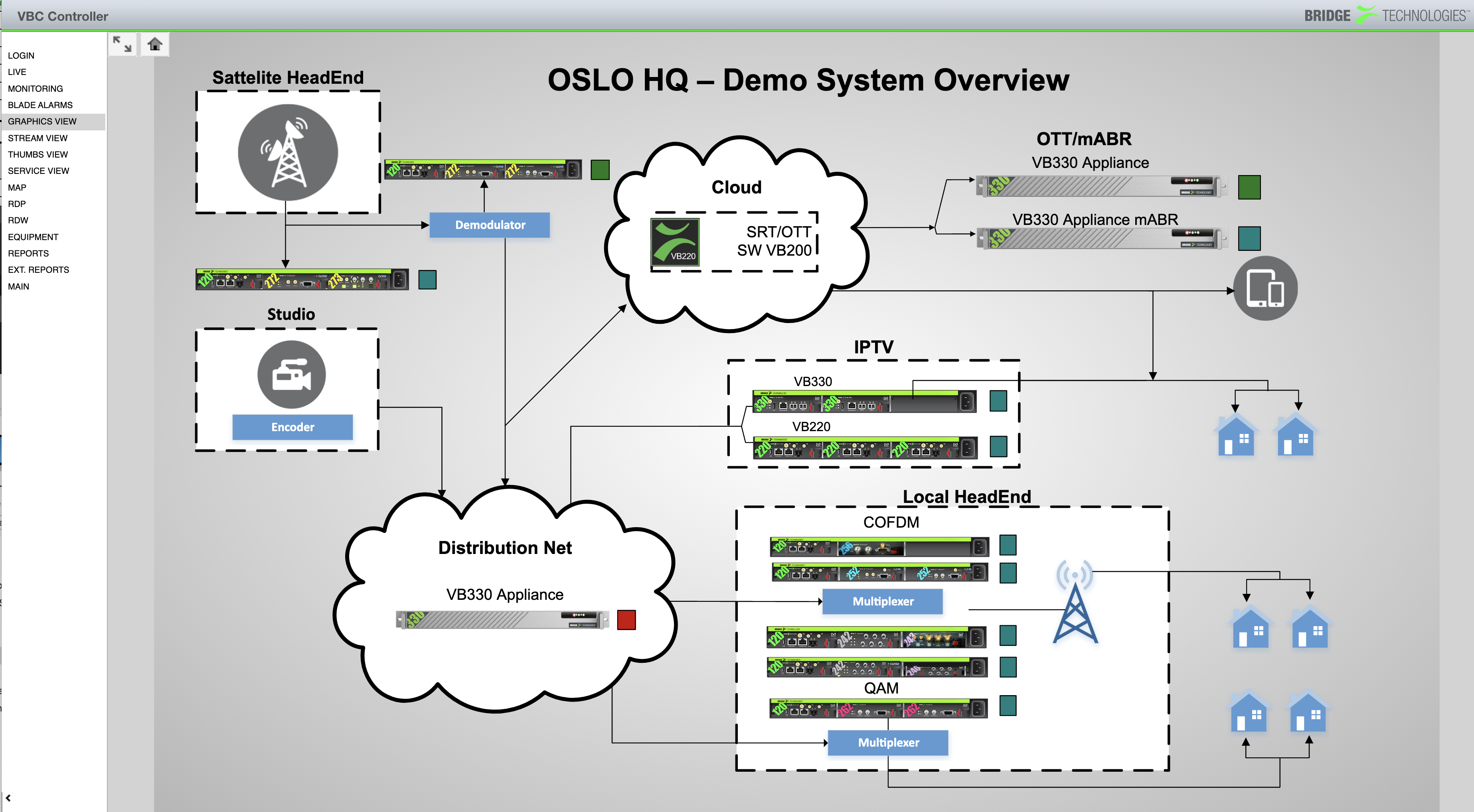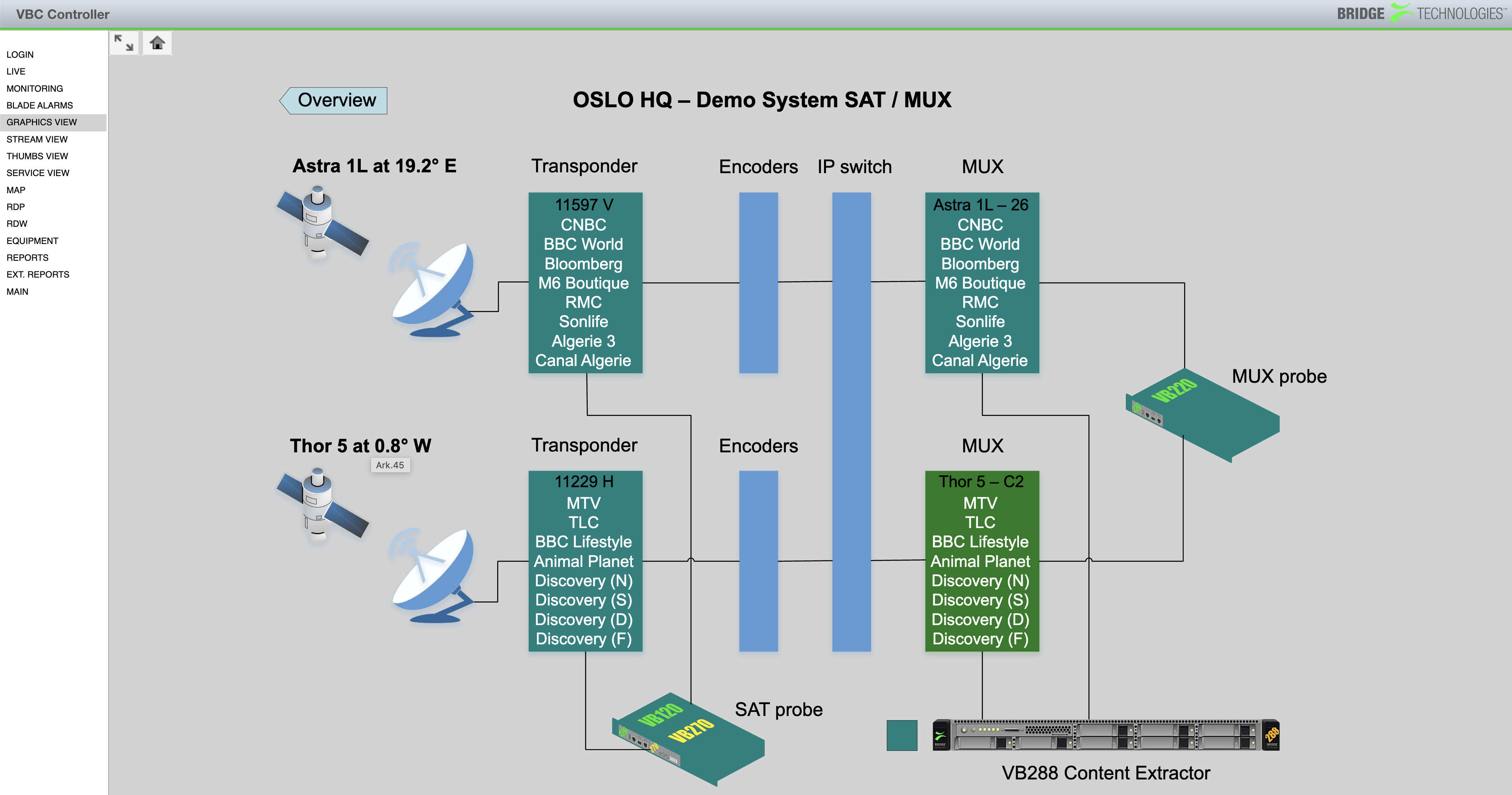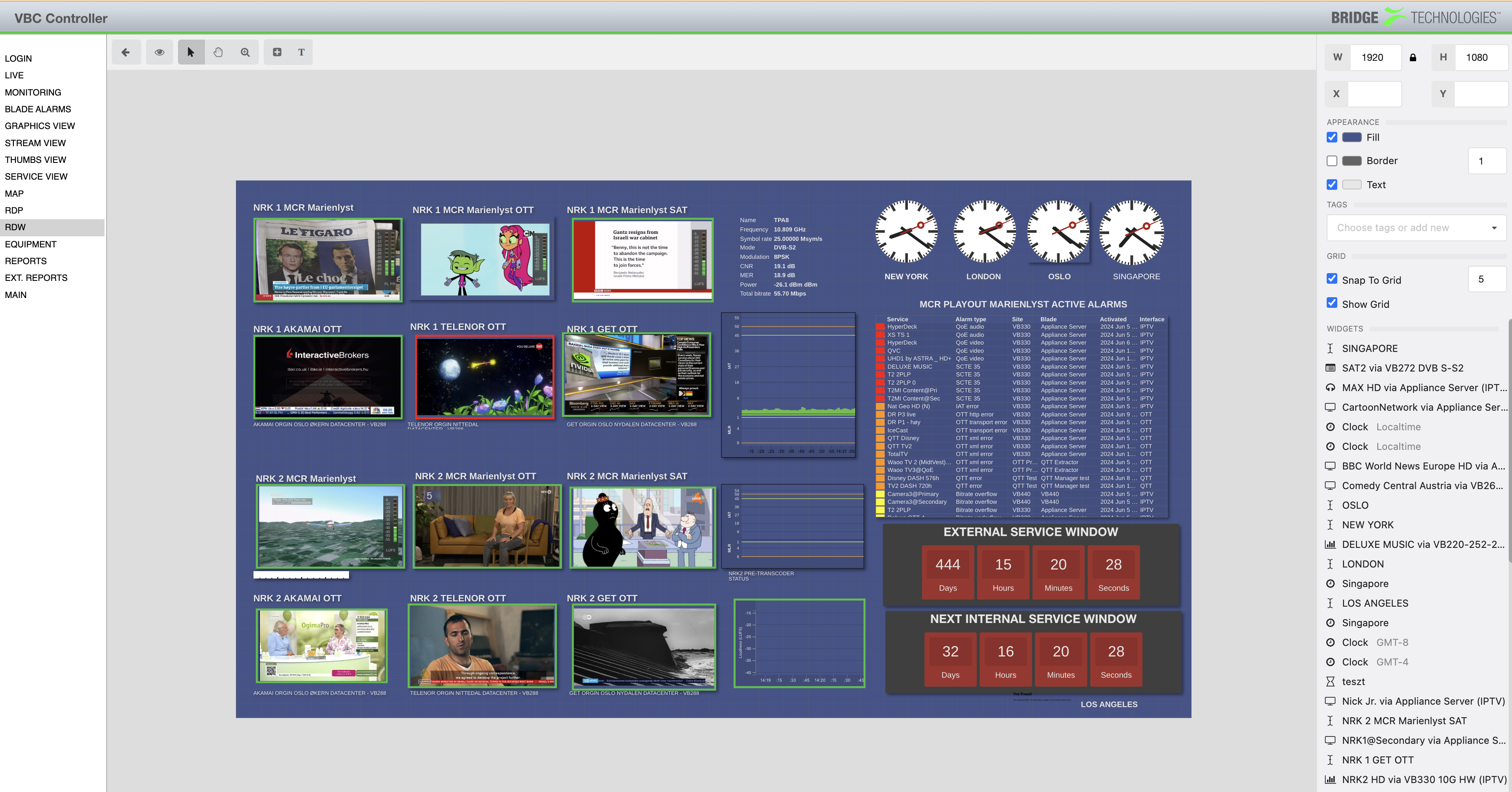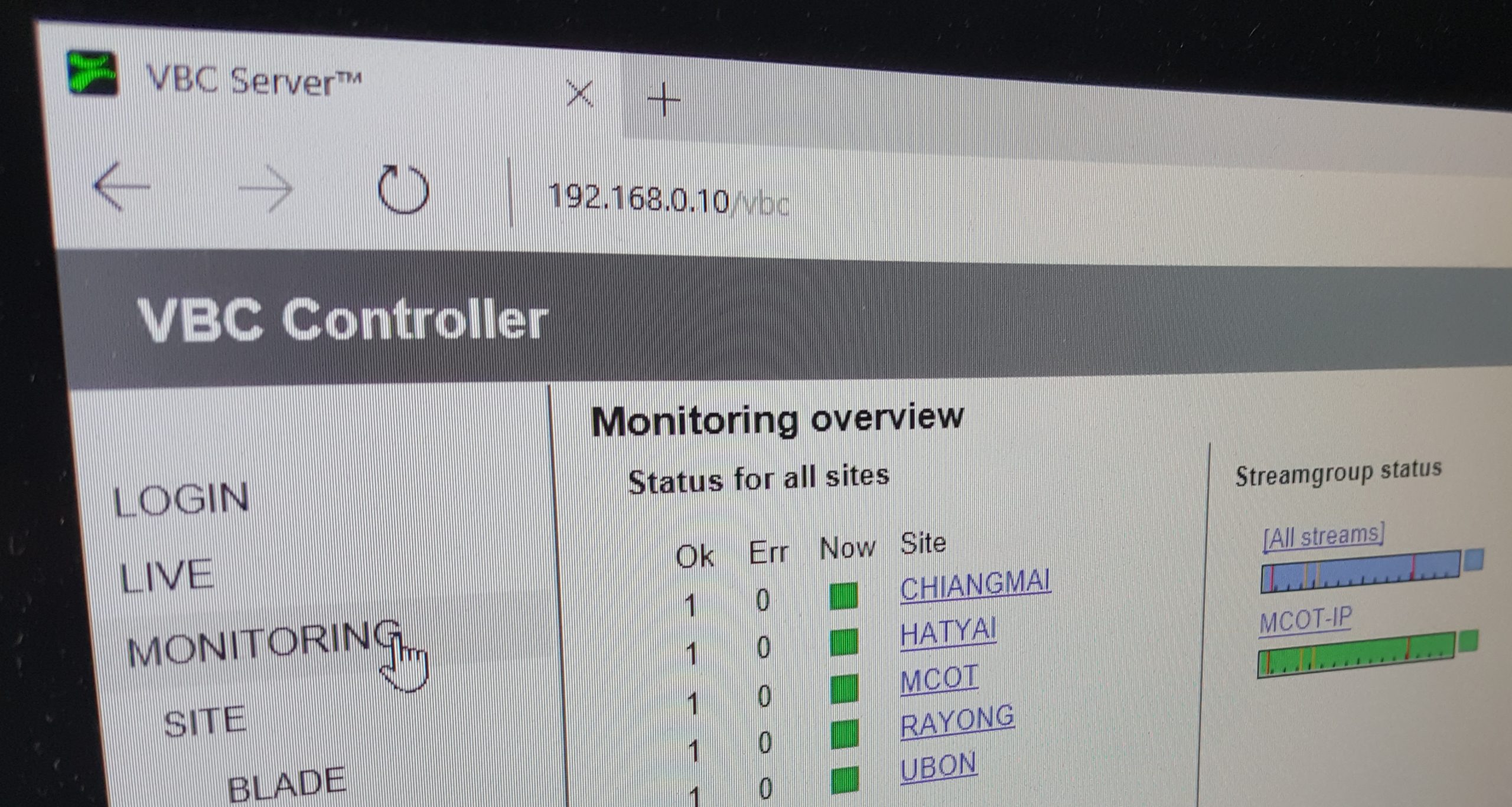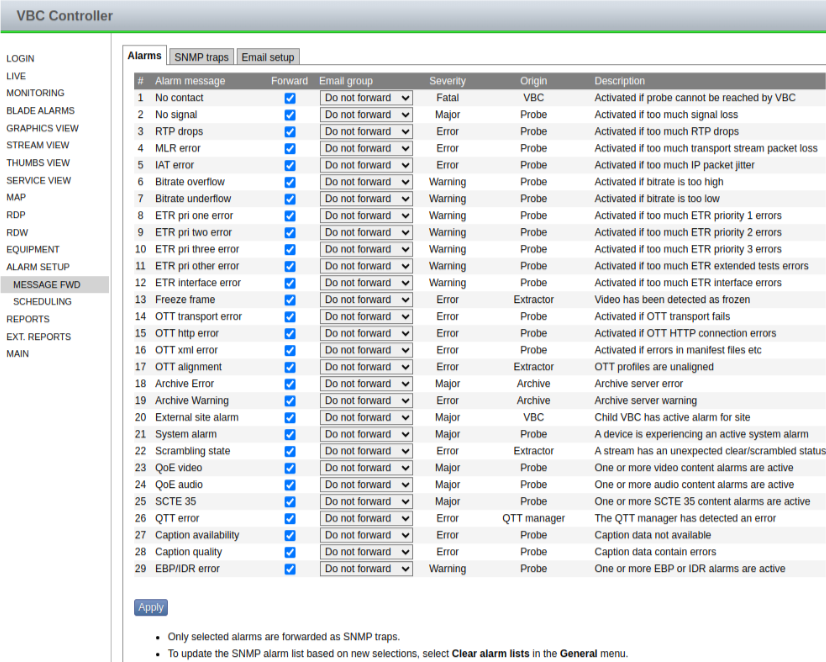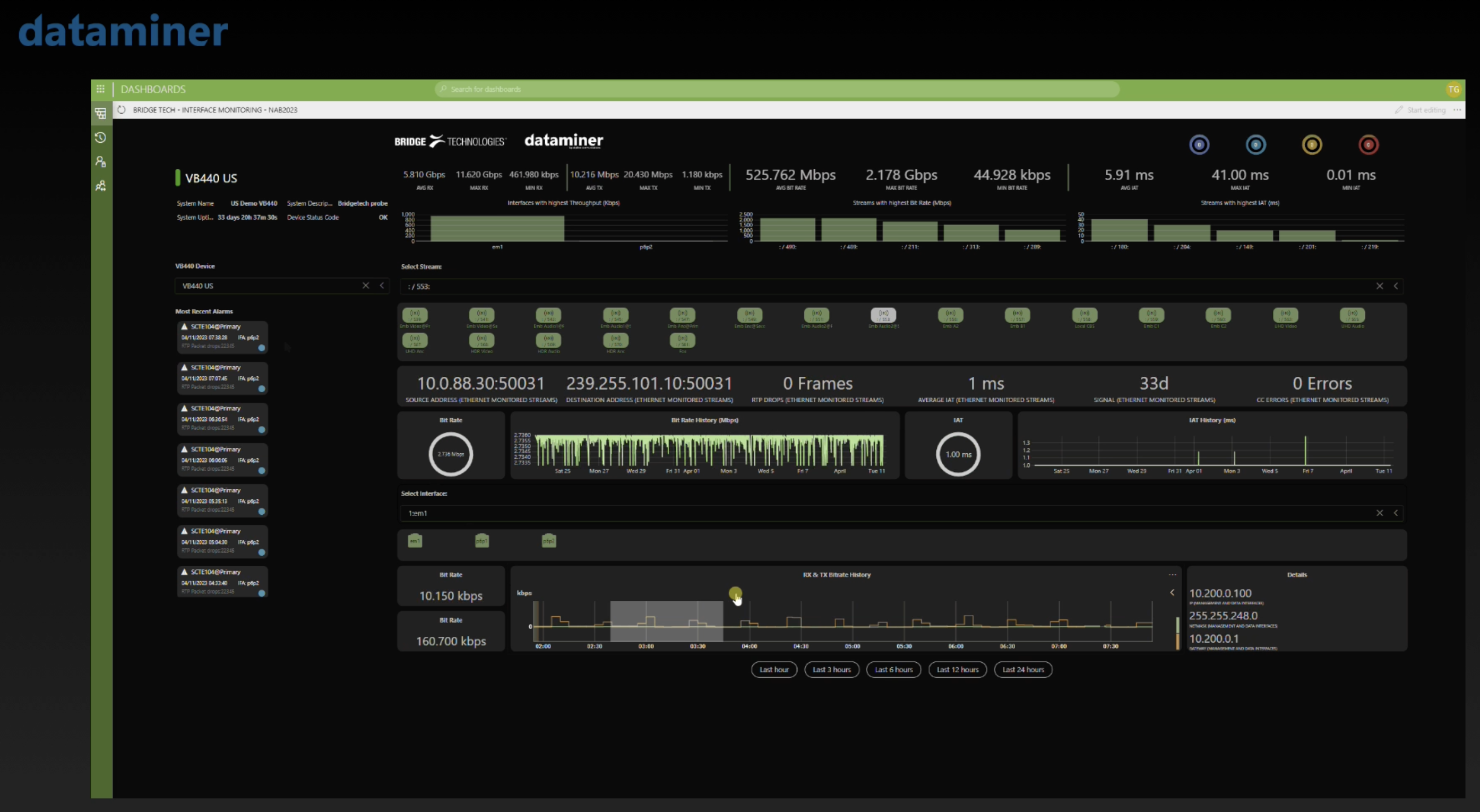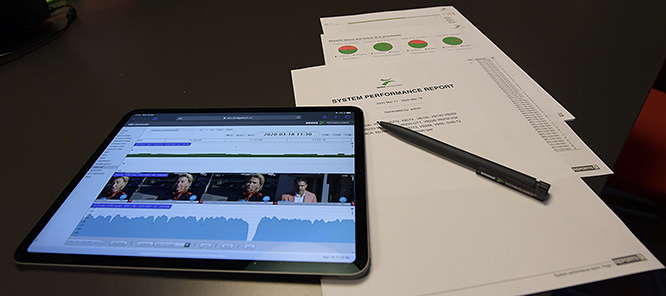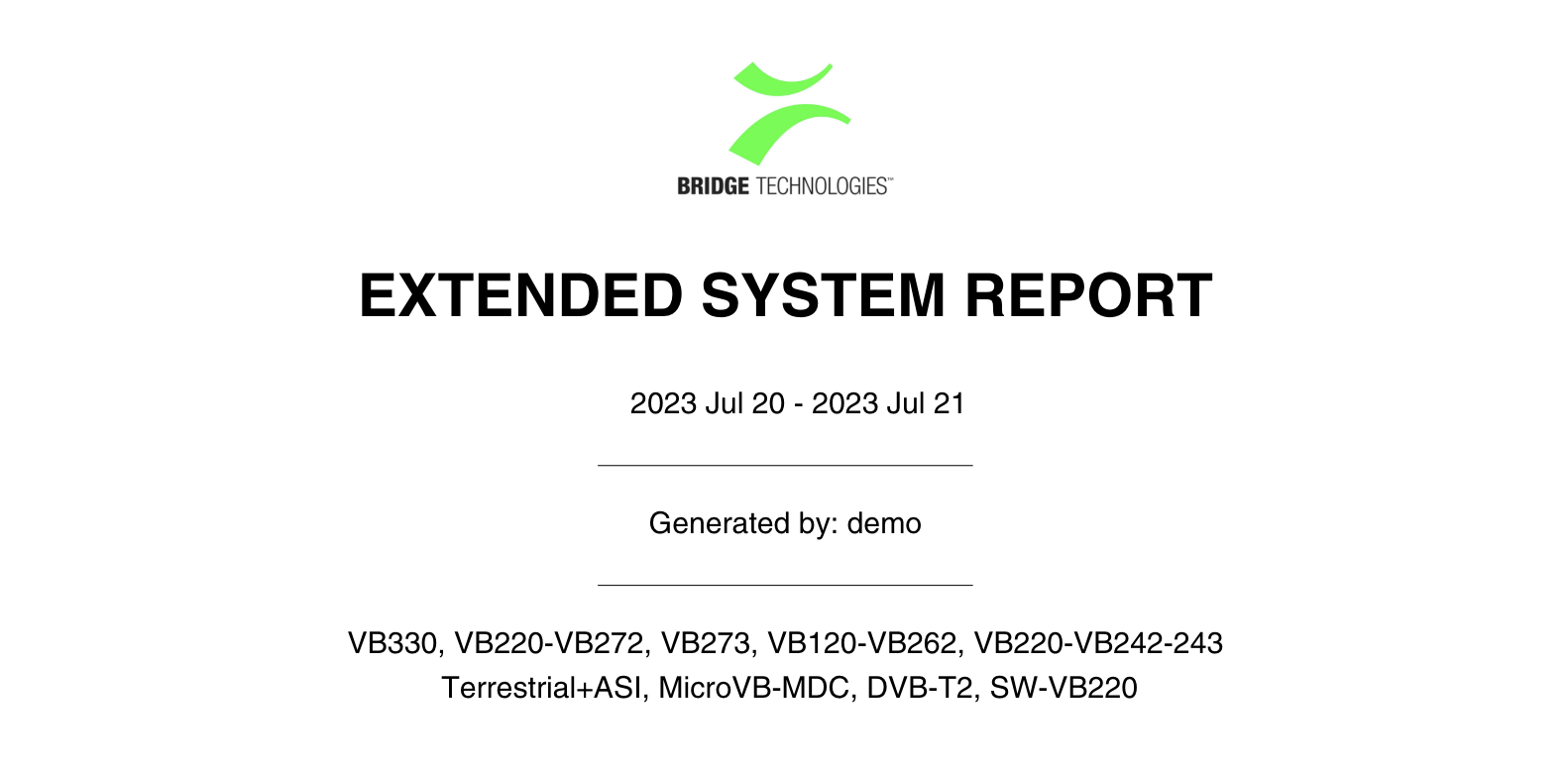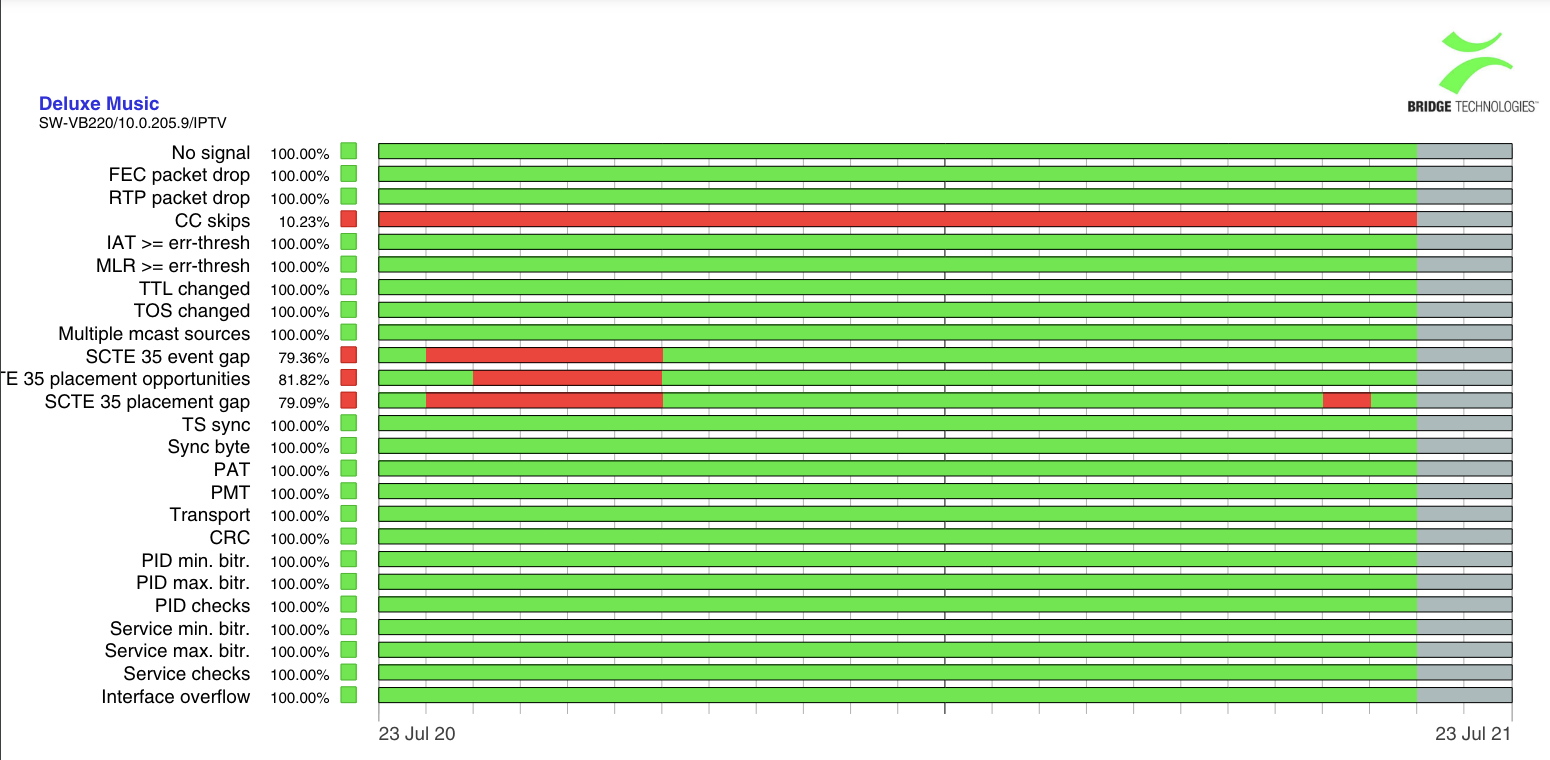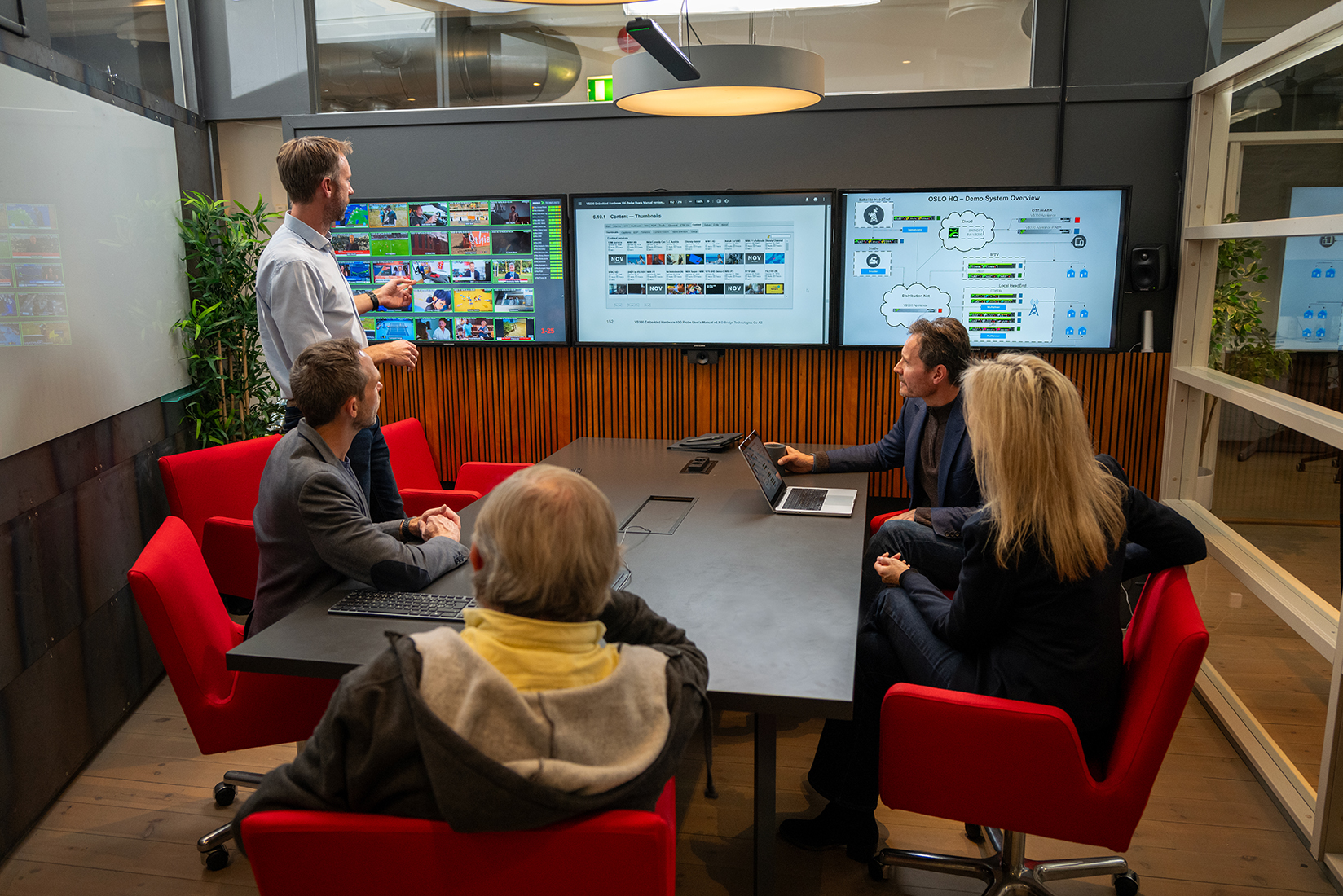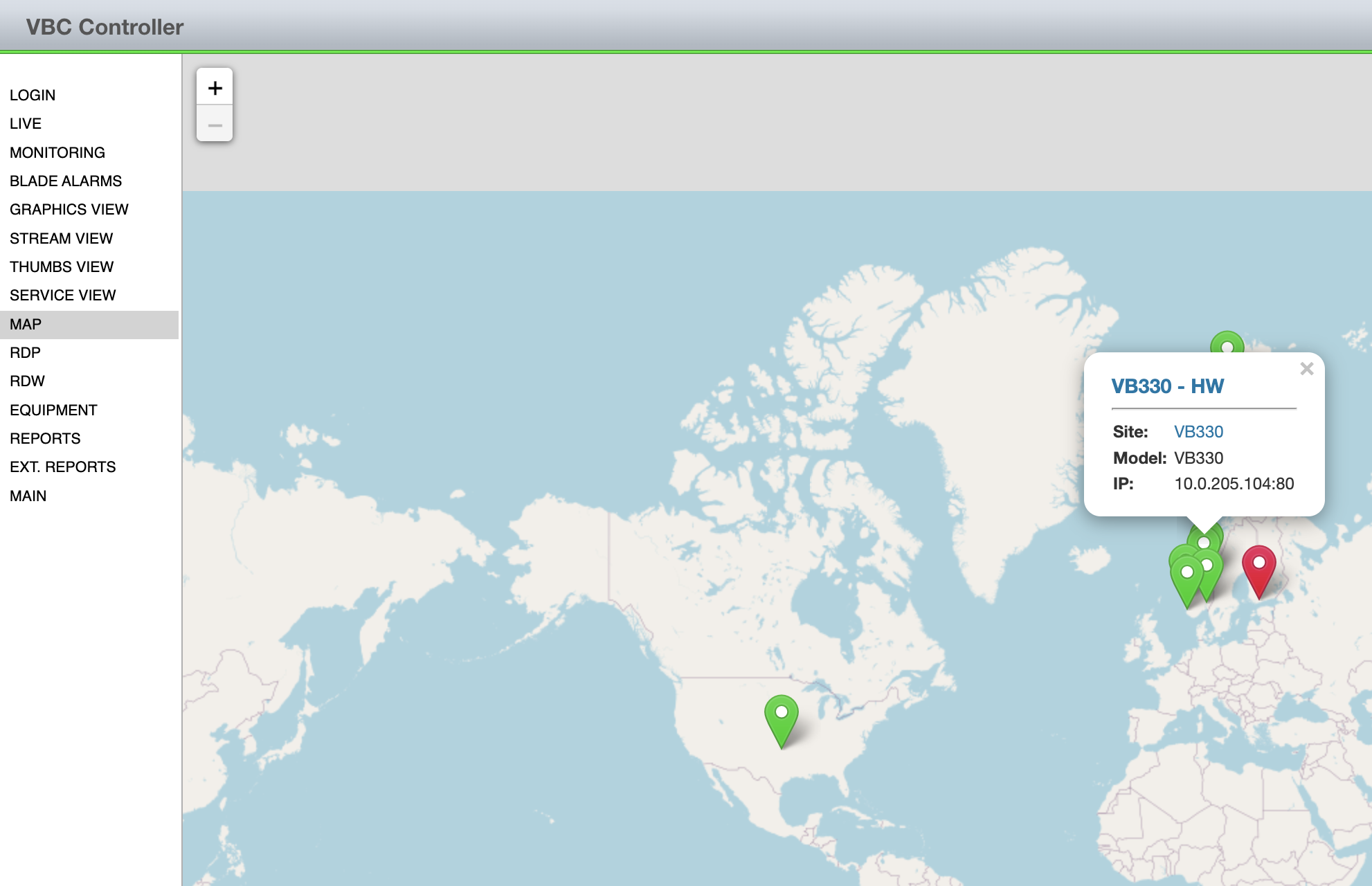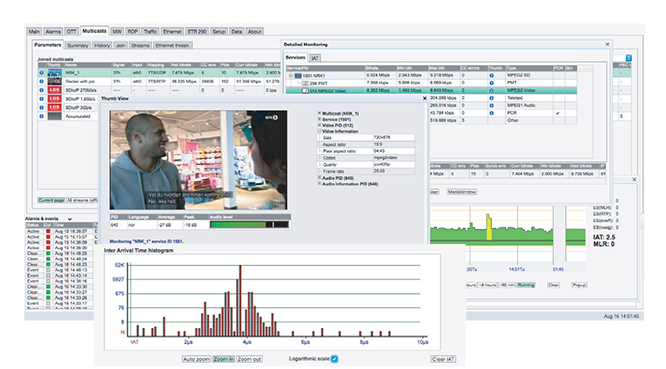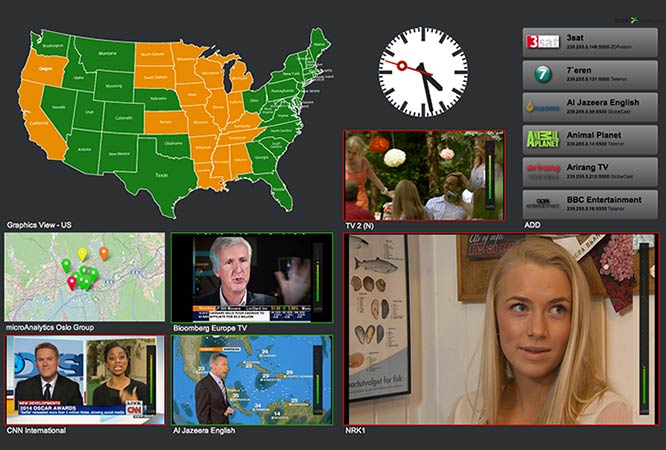VBC SERVER & ELEMENT MANAGER FEATURES
- HTTP/HTTPS web-based client access on any platform
- Configurable access control / support for different user roles
- Password protected login for web browser clients
- Framework for organizing probes into sites
- Group TV channels into stream groups for easy problem identification
- Highly scalable system allowing up to 500 monitoring probes through licensing
- Higher probe node count possible through hierarchical VBC design
- Easy integration and data export for 3rd party NMS systems through XML and SMNP traps
- Central element management of all monitoring probes in the network through HTTP/HTTPS
- Configuration file copy/paste functionality between probes
- Perform centralized bulk software upgrades
- Copy/Paste parts of configuration files between probes from central equipment view
- Central alarm aggregation of all monitoring probes in the network
- Alarm aggregation on a per-site and per-channel scope
- Trend graphs over multiple days of OTT, IPTV and RF parameters
- Graphical timeline view for several days for comparison between sites
- Graphical Transport Stream aggregated alarm view for several days
- Alarm logging with readout as HTML or XML
- Thumbnail and meta data view
- Alarm Scheduling capabilities to filter alarms during specific times during week
- Alarm filtering for avoiding alarm floods
- Define turn-on time and turn-off time to limit alarm floods
- Define window of time over which alarms are disabled
- General system health status panel
- MICROTIMELINE™ view of last 96 hours of operation for individual streams and configurable stream groups
- MICROTIMELINE™ stream view allowing easy identification of worst-performers
- Thumbnail and meta data view
- Hierarchical equipment view with bulk edit functionality
- Framework for centrally controlling the Return Data Path video relay functionality in probes
- Support for adding QTT Manager for active and continuous OTT monitoring
- Linux-based server platform for stable on-prem or cloud deployments
